Over the years we've waxed lyrical numerous times about all the measures that New Zealand's Toyota Racing Series has carried out to increase the level of international interest that surrounds it — from the addition of FIA Super License points, to the timing and nature of the calendar. But today, the category have potentially made its biggest step yet in revealing their next-gen car; the FT-60.
Replacing the outgoing FT-50, the new platform was revealed today at Toyota Racing New Zealand's Hampton Downs base. It sports Toyota Gazoo Racing New Zealand branding, which will become TRNZ's new moniker as the marque ramps up its motorsport involvement worldwide.
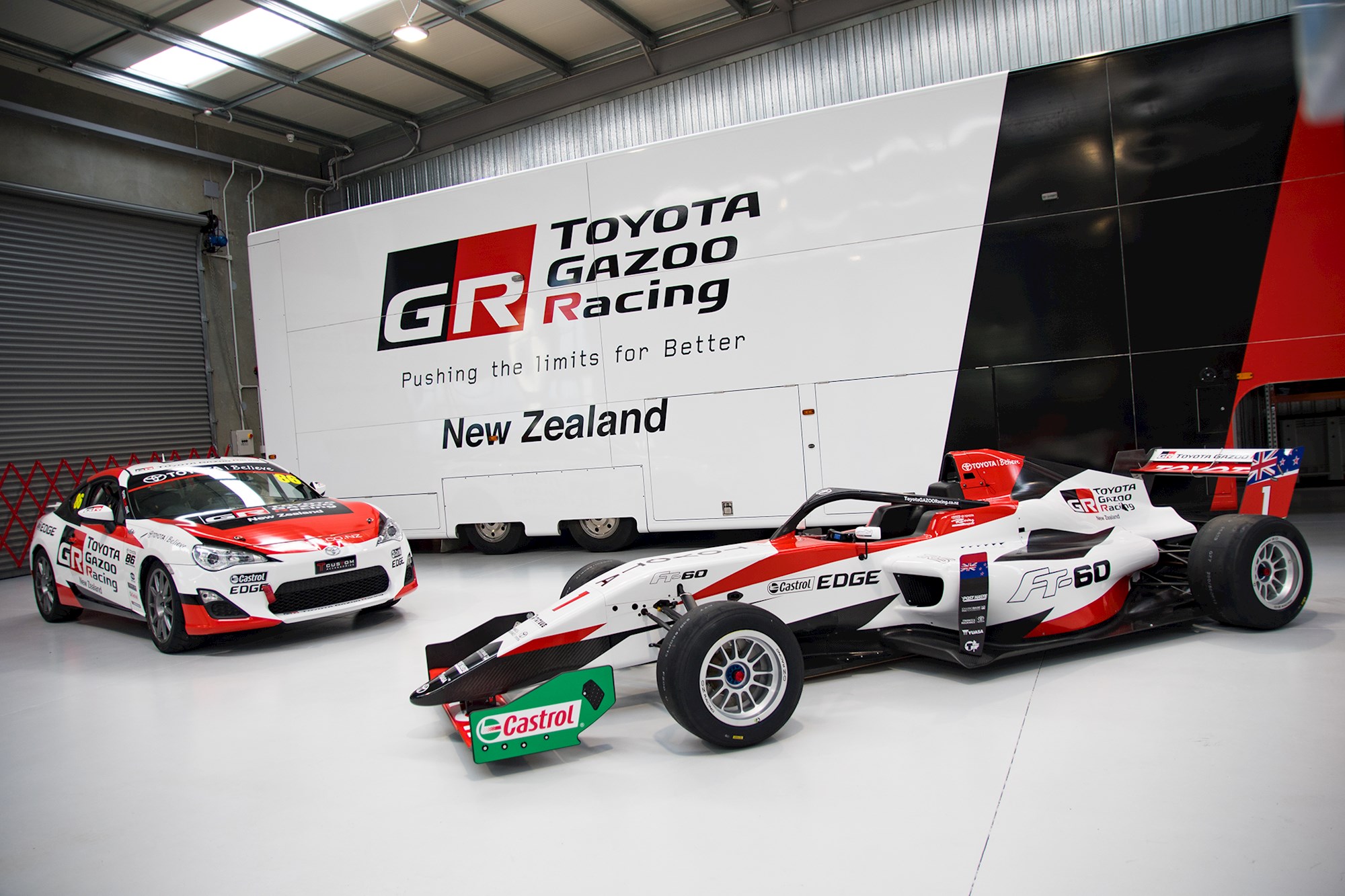
The main theme of the FT-60 is "more". There's more power, there's more aero elements, and there's more heft in the dimensions.
The platform is still sourced from Tatuus out of Italy, with plenty of similarities to cars used in Europe's open-wheel formulae (particularly the newly formed Formula W series).
This manifests in a much more complex aero package and a more imposing size. Compared to the FT-50, the FT-60 comes with a much more shapely and contoured carbon-fibre floor, a bigger rear diffuser with more elements, and a bigger front and rear spoiler.
Driven were able to get a quiet look at the all-composite FT-60 prior to today's launch, and perhaps the most obvious distinction between it and the stack of FT-50s that surround it at Toyota's workshop is that it's considerably larger.
Think about the increase in scale from a Formula 3 car to a Formula 1 car, and then apply a similar increase on top of the old FT-50. All up, this makes for an outright dry weight of approximately 600kg.
To cope with the extra size, the FT-60 also comes with a much larger tyre package; 230/560 in the front and 280/580 in the rear. To put that into perspective, its front tyres are essentially the same size as last year's rear tyres.
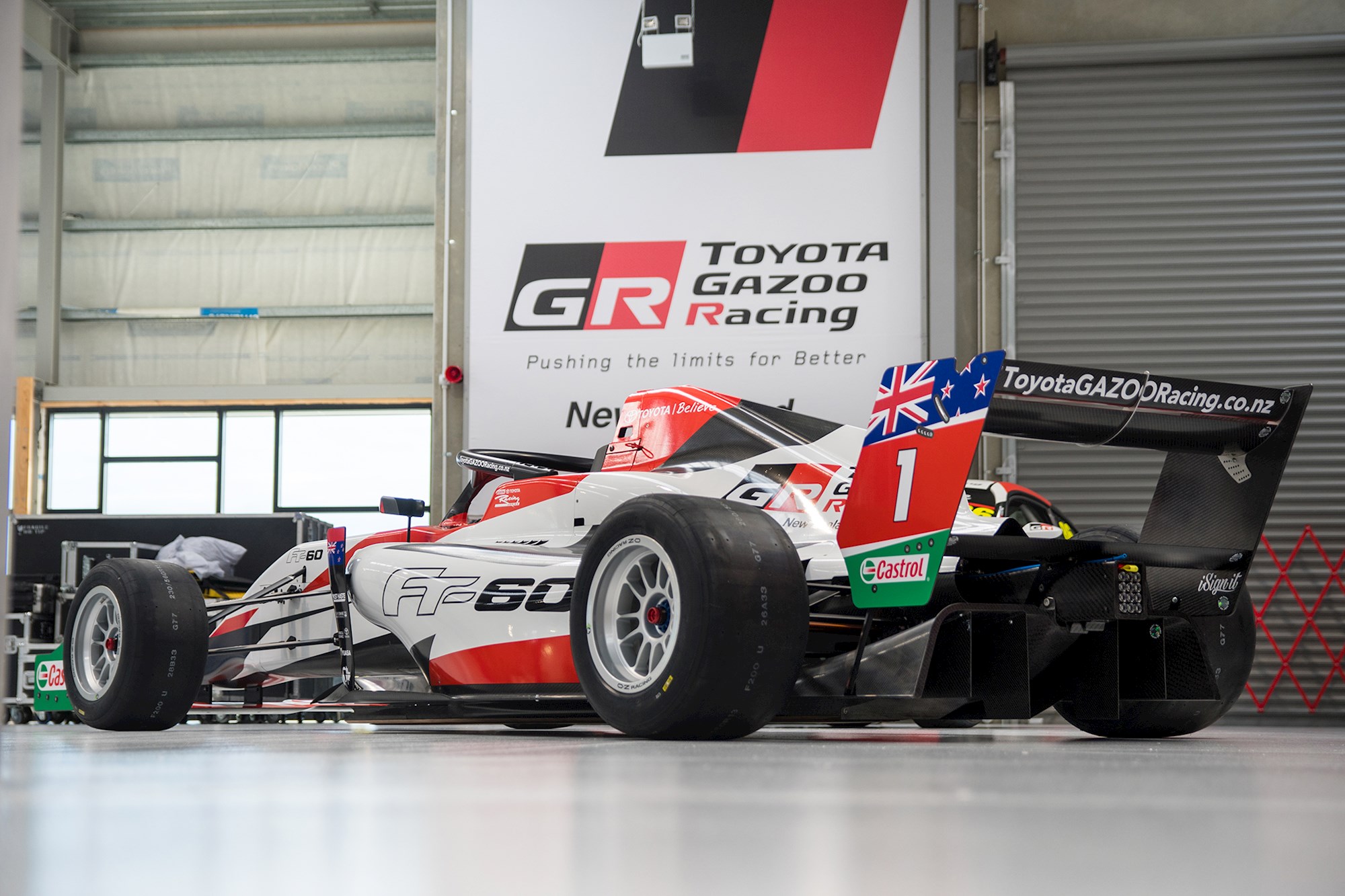
The Toyota Racing Series machine also, for the first time, gets a 'halo'.
The safety structure has caused plenty of controversy in traditionalist open-wheel circles since it was first implemented a few years ago as a safety measure to prevent drivers from high-speed head injuries. But, as time as passed, less and less complaints around 'the jandal' can be found on social media.
What helps in this case is that Tatuus have done a better job than most of integrating the halo into the FT-60's design. With a highly angled front strut, and a top bow that blends into the contours of the engine cover nicely, it's hardly an offensive design.
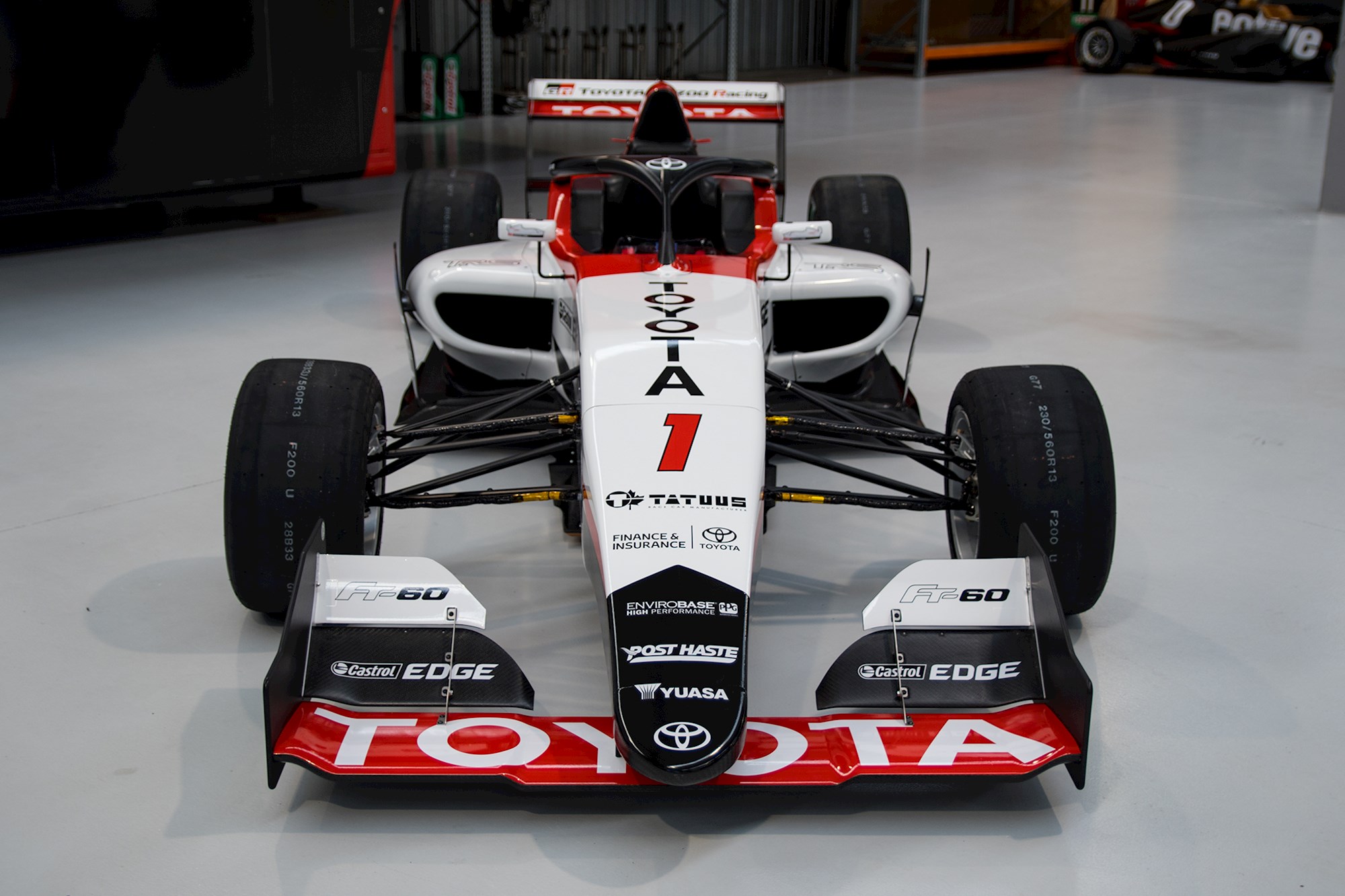
The leading distinction that makes the FT-60 different compared to its overseas counterparts is its power-plant.
As opposed to grabbing an off-the-shelf engine, Toyota have elected to use a locally developed unit instead. It'll be based on the 8AR-FTS from Lexus; a turbocharged 2.0-litre direct and port–injected engine normally seen under the bonnet of cars like the Lexus IS 200-t and RC 200t. In this application, it'll be hooked up to a 6-speed Sadev sequential transmission.
Development will come via the capable hands of David Gouk, with power expected to sit at around 200kW — a 41kW increase over what the outgoing naturally aspirated 2ZZ-GE engine made. Top speed is expected to sit at 250km/h.
We'll do a deeper dive into the new engine in this weekend's print edition.
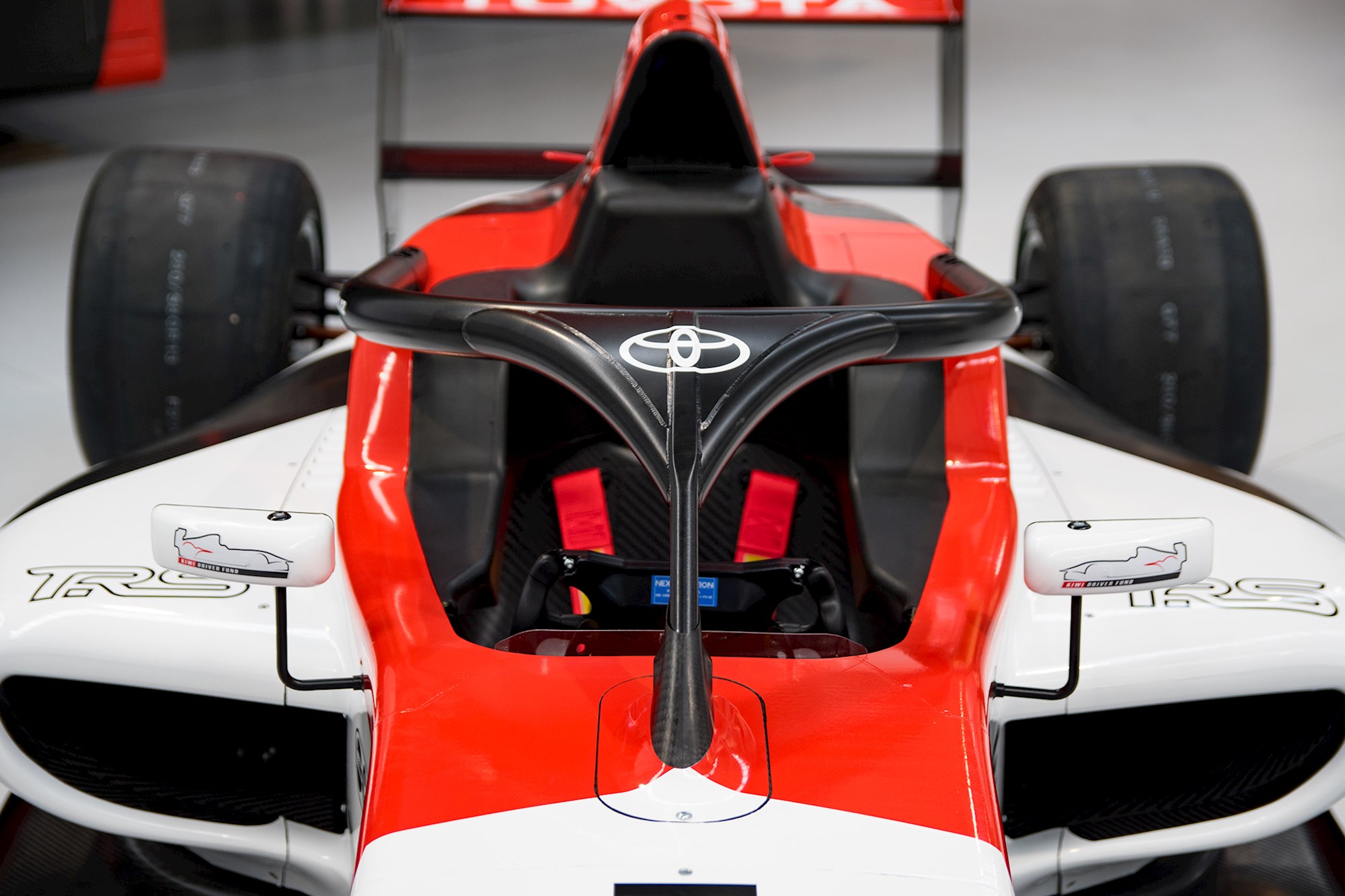
"The FT-60 is a modern car that packs increased power and more downforce than anything we have had before in the series," says series manager Nicolas Caillol.
"Our championship also offers what we believe to be the best value for money of all global junior formulae in terms of track time per dollar. That’s an important consideration for any driver and team these days and we have put that at the forefront of our championship offering.
"Add to that of course, five challenging and contrasting tracks and a five week adventure in New Zealand."
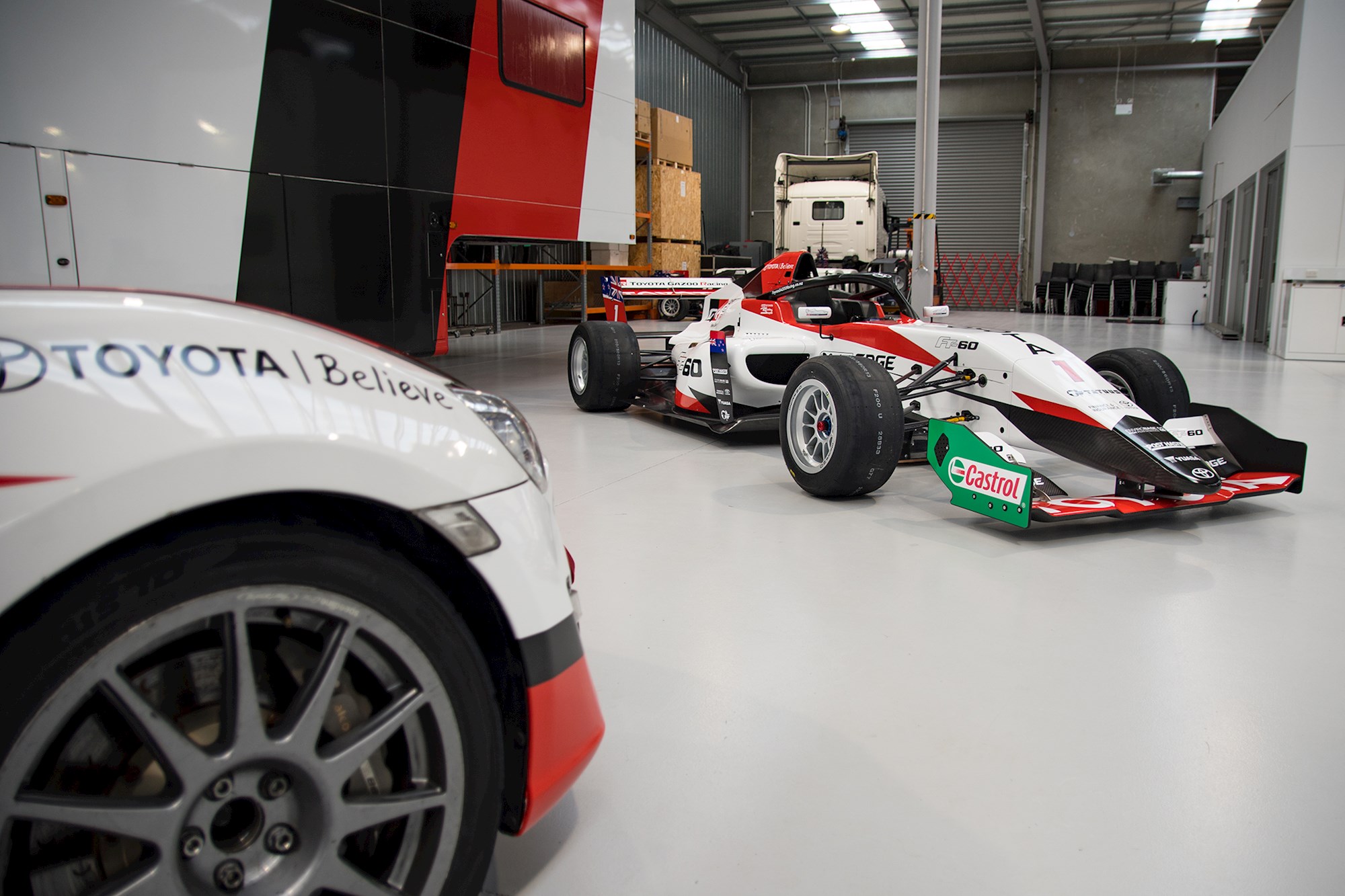
The goal for all of these changes is to further increase that international interest in the category. Young drivers wanting to walk the pathway to Formula 1 will now be able to race a car that's very similar to a Formula 3 car during their off-season in a competitive, FIA points-paying championship.
And, thanks to graduates like Brendon Hartley, Earl Bamber, Shane van Gisbergen, and a selection of past and present Formula 1 drivers, the category's international reputation is at an all-time high.
The hope is that around 20 of these FT-60s will be on the grid come next January when the next five-round, five-weekend championship kicks off. It should be a goody.

















